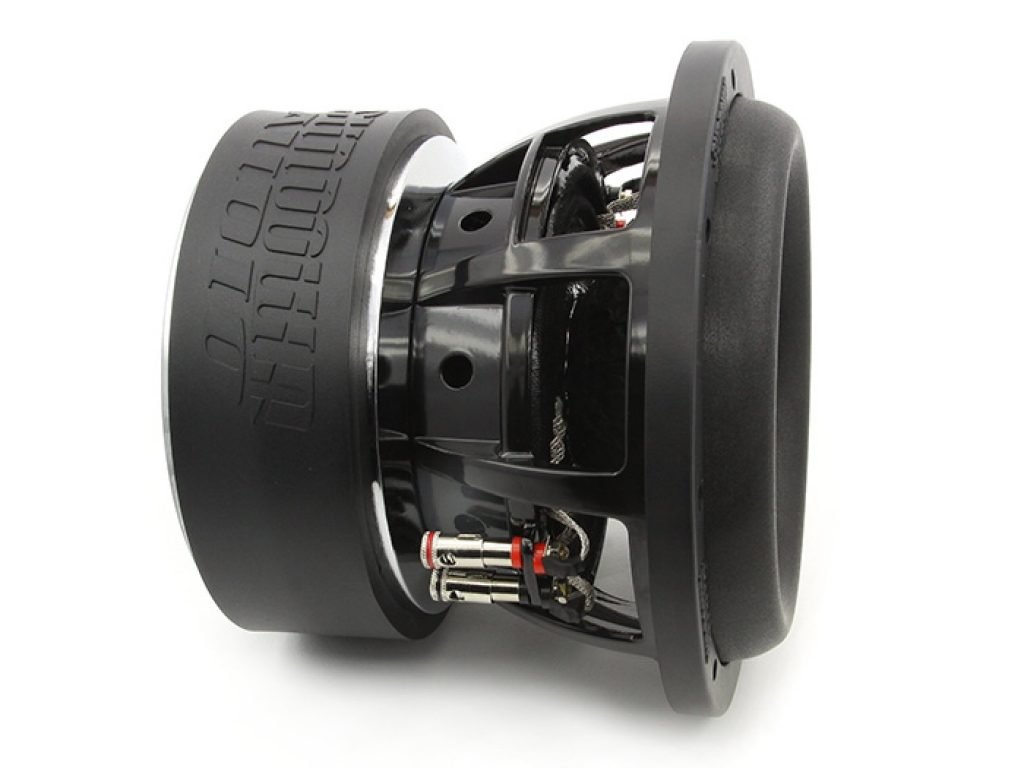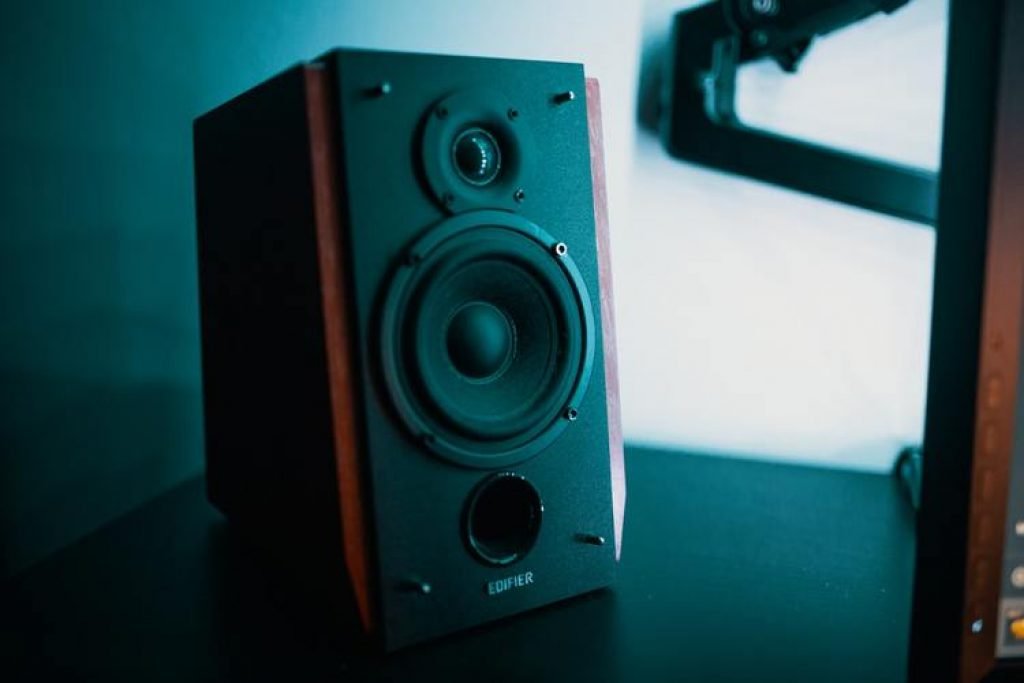Many of our electric and battery run gadgets have magnets installed inside them. But why do speakers have magnets? Magnets serve a specific purpose inside speakers. Also, there are different types of magnets inside speakers.
After reading this article you’re going to know the significant role magnets play in producing sound in speakers. We’ll also cover the scientific process of ‘sound production’ in speakers.
So let’s begin.
Why do speakers have magnets?
Speakers have magnets in them to produce sound. Without two magnetic fields mutually interacting with each other, there can be no sound.
These two magnetic fields are produced by two magnets in close proximity to one another. At least one of the two magnets needs to be electromagnetic in nature.
The most common combination of magnet type in speakers is: one permanent magnet and the other one is an electromagnetic.
Inside the speakers, your electric signals are converted into audible sound. This interaction between two magnetic fields (at least one of them being an electromagnet) is the way sound is produced in your speaker.
Since sound is a mechanical wave, you need mechanical vibrations. The process of creating mechanical vibrations, to produce sound, will be discussed below later.
The electromagnetic coil inside the speaker responds to the electric current flowing in it. This leads to a rapid change of polarity (of the electromagnet) in the direction of the current flow.
The permanent magnet is placed in front of the electromagnet which attracts or repels it based on the polarity. This process creates vibrations.
What does a magnet do in a speaker?
The components of a speaker include a cone, an electric magnet (coil) and a permanent magnet (usually).
The magnets in the speaker create a rapidly changing magnetic interaction between the two magnets. You’ll see later what produces these changing magnetic interactions. These rapidly changing magnetic interactions create vibrations. These vibrations manifest themselves in the form of sound when they hit our eardrums.
How does that happen? Well, to understand how it works, first you have to know that there are two types of magnets in your speakers. One, the permanent magnet, which is static in its position and placement. And second, we have the ‘electromagnet’.
The electromagnet is the magnetic field created by the current (electricity) passing through the coil in your speaker. This electromagnetic field interacts with the constant magnetic field of the permanent magnet fitted in the speaker. This interaction creates the vibrations (sound).
The electromagnet is generally attached to a cone made of a flexible material such as paper or plastic. This amplifies the vibrations, pumping sound waves into the surrounding air and towards your eardrums.
Moreover, the pitch of the sound is governed by the frequency of the vibrations and volume is affected by the amplitude of the vibrations.
You need to keep in mind one of the laws of physics that says energy cannot be created or destroyed. However, it can be transformed from one form to another. In this case, electric energy is transformed into mechanical energy.
Thus, the pulse of electricity transmitted is proportional to the amount of sound produced. So bigger the pulse sent into the speaker through electricity, louder is the sound.
How do speakers work?
So far we have seen that the speakers produce the sound in the form of vibrations. The vibration is caused by the interaction of rapidly changing magnetic fields. Now let’s understand the process in more detail.
The rapidly changing magnetic field is caused by the rapid interchange of magnetic poles of the electromagnet. Rapid interchange of poles happens due to the flow of electricity. You’ll see how it works.
The electromagnet gets activated by electricity flowing in the coil. There is the constant presence of a magnetic field created by the permanent magnet. The electromagnet is positioned close to the permanent magnet. Thus, the electromagnet is placed in the constant magnetic field of the permanent magnet.
The two magnets- the electromagnet and the permanent one, interact with each other. The sound produced is the result of the interaction of the two magnetic fields.
These results are the same as that of a normal condition when two magnetic fields interact with each other. For instance, the positive end of the permanent magnet is attracted to the negative pole of the electromagnetic field. Similarly, the negative pole of the permanent magnet is repelled by the electro magnet’s negative pole.
The coil
When the electric current flowing through the coil (of speakers) changes, its magnetic poles also change. That is to say, the electromagnet’s polar orientation interchange positions. When the poles of the electromagnet interchange positions, so do the magnetic field orientation.
Thus, the direction of repulsion and attraction keeps on switching places due to the rapid interchange of magnetic poles of the electromagnet.
This way every alternate current reverses the magnetic force between the electromagnet and its counterpart. This pushes the coil to make rapid back and forth movement. Such movements lead to the formation of vibrations.
The pitch of the sound produced is governed by the frequency of the vibrations. The amplitude of the vibrations affects the volume.
This is the precise reason that you can see the diaphragm covering the cone move when you turn the volume high enough.
To accurately reproduce all the different frequencies of sound in a piece of music, top quality speakers use different sized cones dedicated to various frequencies.
Magnet Types
The three types of materials used in speaker magnets include Alnico, Ceramic (Ferrite) and Neodymium.
Each material has a specific effect on the tonal features of the speaker.
Alnico is the original magnet material used in speakers. It produces a classic tone. Alnico magnets are more expensive due to their cobalt content. These speakers sound warmer and sweeter at low volumes.
Ceramic magnets are an inexpensive alternative to Alnico. These speakers have a few advantages. They are not very expensive, are more versatility and can produce a wide range of tones. Ceramic speakers tend to weigh more, generally handle more power and sound better at higher volumes.
Neodymium is the latest material which is used as speaker magnets. Price-wise they are moderate. Its price range falls between that of Alnico and ceramic magnet speakers. Their frequency response is well-balanced. Major benefits include their weight and efficiency.
A Neodymium speaker weighs about 50% less than other speakers without compromising on power or tone. These speakers perform especially well in large and heavy amplifiers or amplifiers that have more than two speakers.
Neodymium magnets are generally smaller than the more common ferrite magnets, but this does not imply the speaker is underpowered.
Why are the magnets round?
Most magnets in car speakers are round in shape. That’s no coincidence nor conventional tradition. But rather it is because of a convenient science factor. Let’s see how.
The cross-sectional area in the case of circular or round magnets is the largest. As a result, more area can be covered by round magnets compared to magnets of other shapes.
Also even if we want to compromise with the size of the circular magnet, it won’t affect the quality. Meaning that even if the magnet inside the speaker is made thinner, the area covered will still be large in the case of round magnets.
These scientific advantages do not hold true for other shapes like bar magnets. That’s why round magnets are preferred in speakers.
Can a speaker work without a magnet?

Technically speaking, a speaker cannot work without magnets.
As we have seen already, the opposing magnetic field creates vibrations which is the source of sound in our speakers. However, you should know that permanent magnets aren’t mandatory in speakers.
Permanent magnets are often heavy and take up more space. There is a lighter and convenient alternative. Let’s find out.
So, certain kind of speakers, especially the lightweight ones, are manufactured without a permanent magnet. How is the sound produced in such a case? In such a case, we have 2 electromagnets working in a complementary manner.
While one electromagnet is fixed, the other one is placed on a movable membrane. The fixed electromagnet plays the role which permanent magnets do in ordinary speakers.
Both the coils are placed in close proximity to each other. They are excited by a common source signal like a common amplifier. Electromagnetic fields are created by the coils upon excitation.
The magnetic fields created by the coils cause mutual interaction between them. It causes the coils to alternately attract and repel one another.
One of the coils receives an excitation signal directly from the source. While the other coil receives the source signal in an indirect way, preferable via a bridge rectifier. The coils may be in the form of conventional wound wires. Or it can be formed on a printed circuit board in the form of flat spirals.
The resulting speaker is very lightweight. It is well suited for use in cars, aeroplanes, and other optimizations in which weight minimization is important.
There are other speakers which do not use magnets at all. For instance, Piezo speakers. Piezo speakers use the piezoelectric effect.
They are similar to the above-mentioned process. They generate mechanical vibration by applying an electrical signal to a piezoelectric crystal. Buzzers in wristwatches generally use piezo speakers.
Does a bigger magnet mean a better speaker?
Magnets are used to make an opposing magnetic field which creates vibrations. This makes the cone or panel of the speaker move. The vibrations are the sounds we hear. As a convention, speakers generally contain large magnets inside of them.
Bigger magnet means more vibrations. Why? Because a larger magnet would imply stronger opposing magnetic field leading to more vibrations.
More vibrations in turn lead to louder sound. However, the theory doesn’t hold true universally.
The biggest or the heaviest magnet doesn’t necessarily imply the best driver. There are many other factors which are involved.
This is especially true with the growing popularity of super lightweight and powerful magnets. These magnets are generally made of neodymium. As we have already seen, neodymium magnets are really powerful although they are small and lightweight.
Conclusion
In this segment we saw the role of magnets in speakers. We saw that the sound is produced by the interaction of two magnetic fields. At least one of the two magnetic fields is the result of an electromagnet.
To convert an electrical signal to an audible sound, speakers contain an electromagnet. It is a metal coil which creates a magnetic field when an electric current flows through it.
The electrified coil has the properties of a normal (permanent) magnet. There is, however, one particularly handy property. When the direction of the current in the coil is reversed, the poles in the magnet gets flipped.
This electromagnet reacts with the permanent magnet in the speakers. (In speakers, where the manufacturer avoids installing a permanent magnet, a second electromagnet take its place).
Inside the speaker, the electromagnet is placed in front of the permanent magnet. The permanent magnet is placed in a compact and fixed position whereas the electromagnet is mobile.
As currents of electricity pass through the coil of the electromagnet, the direction of its magnetic field changes rapidly. This means that it is attracted to and repelled from the permanent magnet rapidly in alternate turns, vibrating back and forth.
These vibrations lead to sound produced in speakers. Conventionally the size of the magnet influences the quality of sound. However, with neodymium magnets, we have lighter magnets which are powerful in quality.
Also we saw that mostly magnets in speakers are round. That’s because the cross-sectional area of round magnets is the largest.



whoah this blog is wonderful i really like reading your articles. Keep up the great paintings! You realize, a lot of people are hunting round for this info, you could help them greatly.